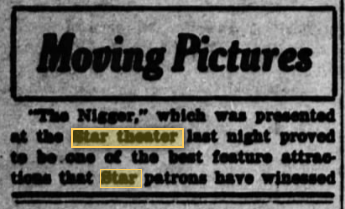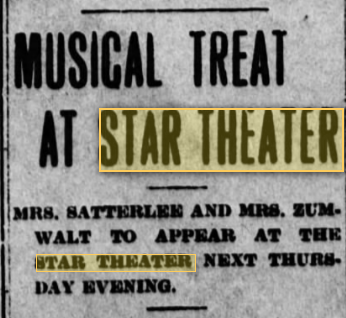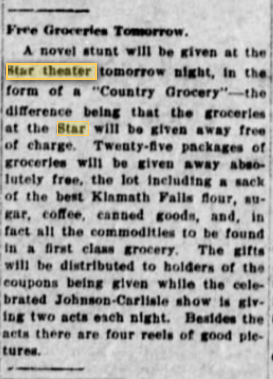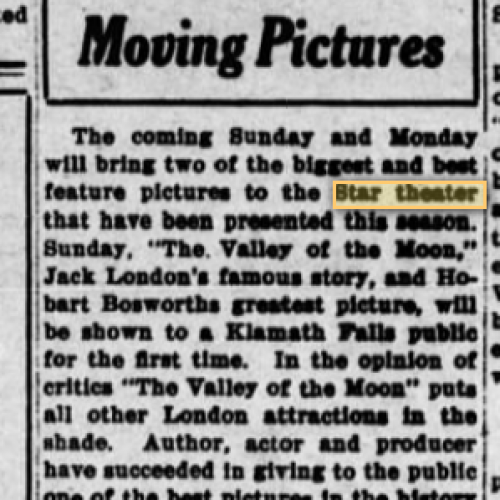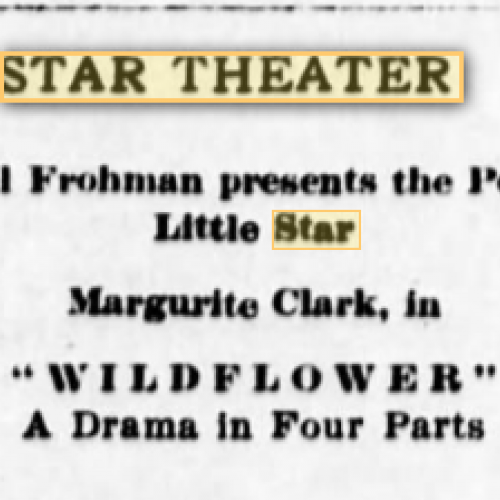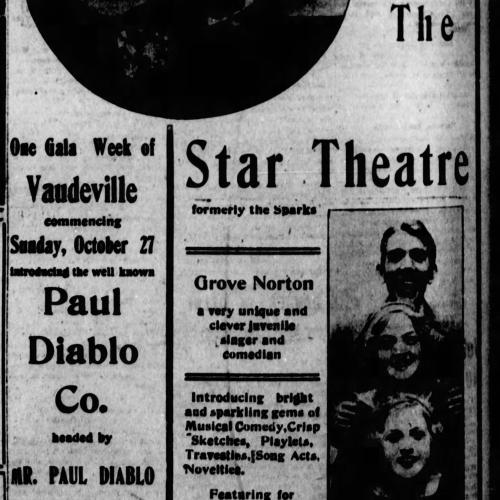John V. Houston owned the Star Theater as well as Temple Theater and Houston's Opera House in Klamath Falls. They were all closely located near each other all on Main Street. Klamath Falls being a small town, this isn’t much of a surprise to me because smaller population usually results in only a few people running the town and owning multiple businesses. J.V. Houston even eventually was elected to city council in 1912 when he opened up Temple and Star in 1912.
According to the above article from the Evening Herald in May 1916, J.V. Houston was finally making Star a “real theater.” Originally, the Star was used as a musical theater primarily with performances of the Star Theater Orchestra and other traveling musicians. Then J.V. began incorporating motion pictures into the program.
I don’t think this necessarily means that the theater wasn’t “real” but rather he is making it feel more real. Thus, the new improvements such as the Powers machine and the fixing of the sloped floor. Also, the introduction of more film screenings allowed for the “real” feel a theater should encompass. Now, Star Theater was more than primarily a performance hall for music and dances but had much more focus on the motion picture aspect.

Moving pictures were obviously a common feature at Star theater and the newspapers often advertised weekly showings for Star. Some articles were just brief mentions of the upcoming film showings, but there were longer articles as well (for perhaps the more notable pictures).
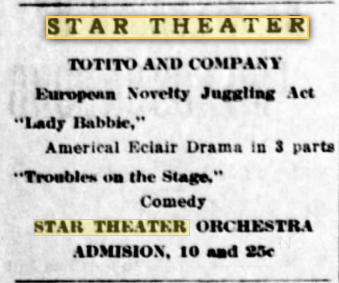
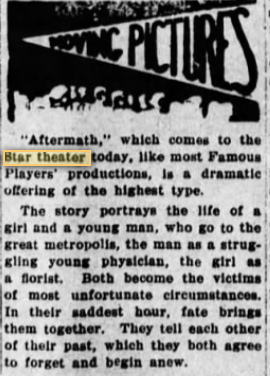
One of the most interesting articles I found was the featuring of “The Williamsburg Submarine Pictures”. In the ad, this reel was recognized as “The World’s Greatest Motion Picture in Seven Great Reels”. The emphasis on this must have been important to the owners and managers of Star Theater because of the incredible way the film was made (according to the article).
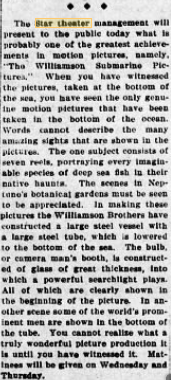
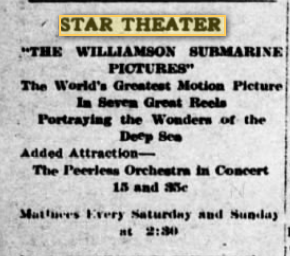
Often movies with famous actors like Mary Pickford, Lillian Walker and Anita Stewart were shown. This may be to increase viewership and draw more people into the theater. Also, the mentioning of Vitagraph stars (which were perhaps the most popular stars in Hollywood in the early 1900s) added to the allure.

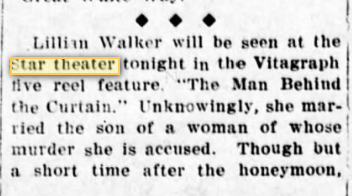
The genres of the motion pictures presented at Star Theater include comedies, action films, dramas and more. This allows the audience to have many options to choose from when going to see a picture. Thus, making the target audience larger and attracting more Klamath Falls citizens to the theaters.
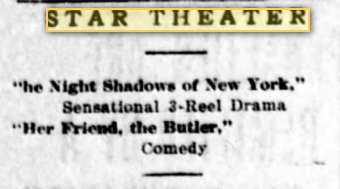
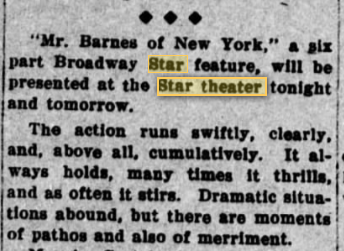
Additionally, the musical performances were widely advertised. It seems as if motion pictures and music had an equal relationship in performing at Star Theater in the 1910s.
Star Theater had many promotional strategies in the form of newspaper tie-ins and collaborations with other local businesses. This was extremely popular for motion picture theaters in the early 1900s because it gave people a reason to come in and watch the film (as they got rewarded for it in free and discounted items). This probably came in handy for the working class audience.
Even theaters back in the 1900s knew that mistakes would be made and they didn’t shy away from it or try to cover it up. I found an article warning the public of Star theater's shipping mistake. This was incredibly responsible because they owned up to it, which gave the theater credibility. The audience could trust them and hope mistakes as such wouldn’t be made again.
Racism was a common occurrence in Oregon in the early 1900s. “Blackface” and calling African-Americans names were presently found in newspapers to advertise films.
